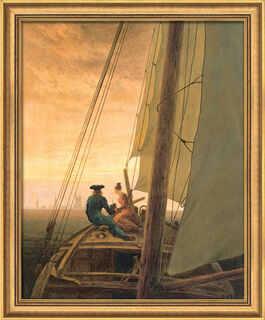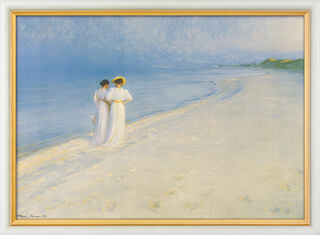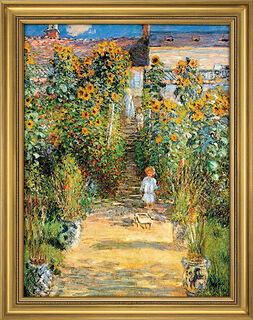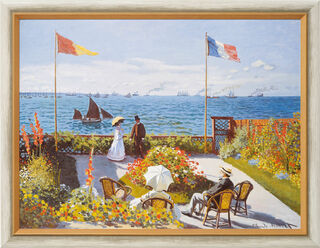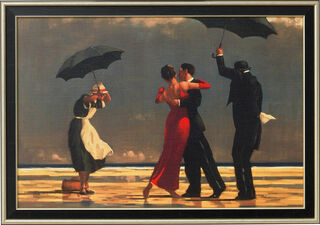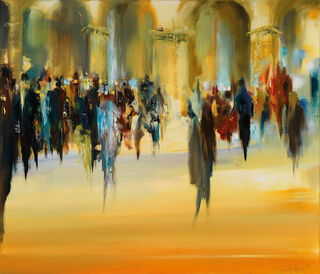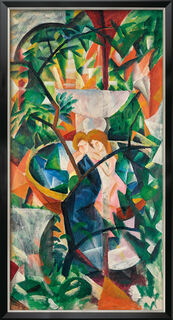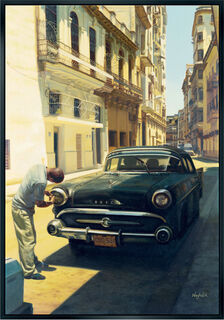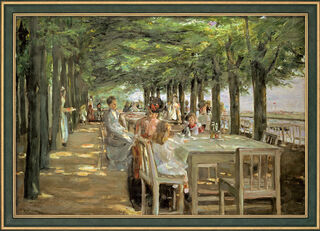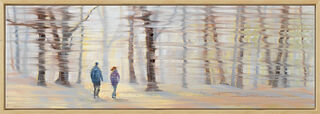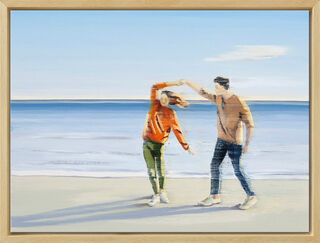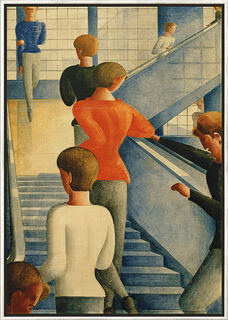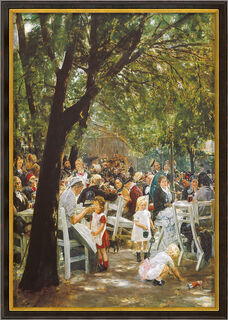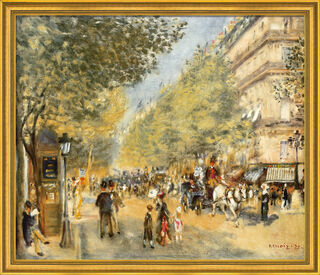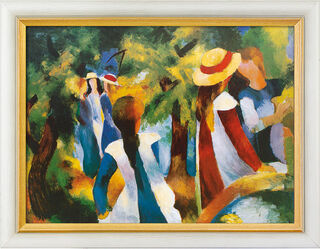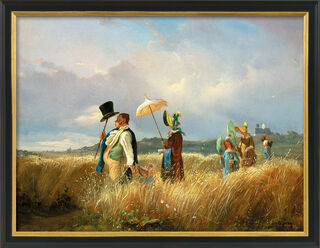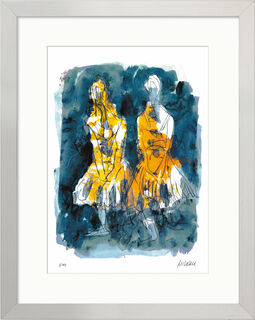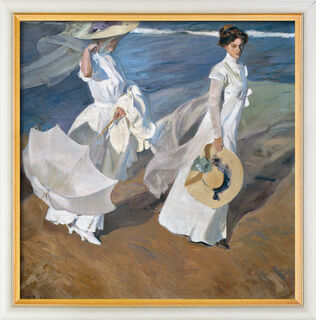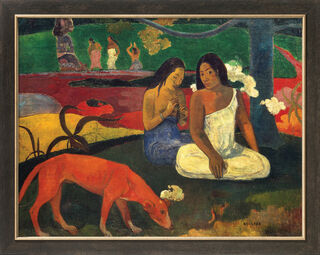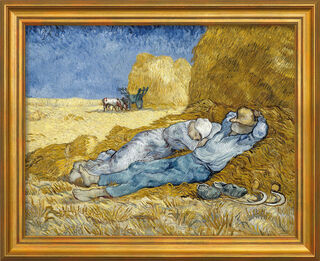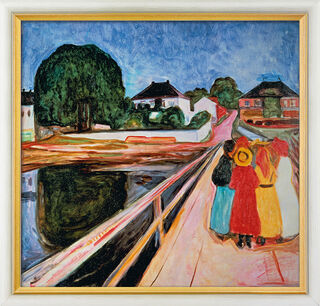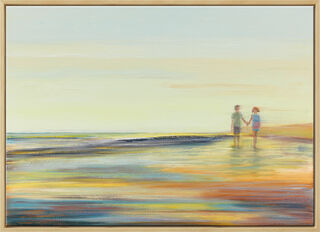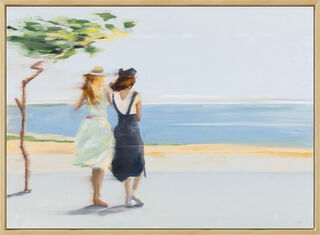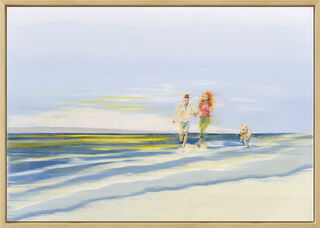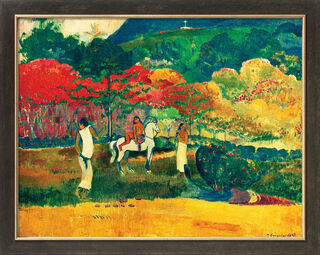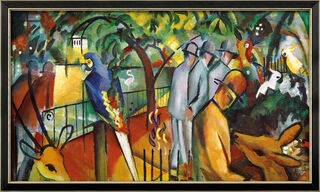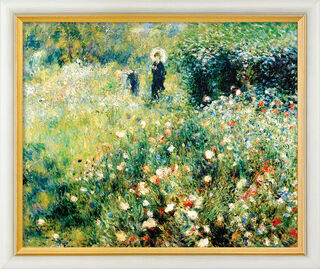Genre Scenes
Genre Scenes in Painting – The Everyday Life of People on Canvas
The term "genre painting" is used in the visual arts to describe artworks depicting everyday situations or scenes from people's lives. Classical subjects of genre painters include societies, meals, festivals, markets, people at work (e.g., in agriculture) or urban scenes such as people on streets and public squares. In contrast to portrait paintings, where an individual or a famous person is the focus, genre painting shows people as a community or representatives of a social group. Moreover, the protagonists in the picture are always depicted in an unadorned and non-idealised way. This pictorial theme can be found in numerous art epochs so it cannot be exclusively assigned to a particular epoch. Genre painting had its origins in antiquity. For example, depictions of people fighting or hunting scenes date back to Ancient Rome and Ancient Greece. Starting around the 17th century, genre painting was able to establish itself as an independent subject, and it was particularly popular during the Baroque epoch. In the following centuries, painters from all important art epochs such as Romanticism, Expressionism, Impressionism, Cubism and Pop Art dealt with this subject, and it is still widespread among contemporary artists.
Genre Painting Yesterday and Today
Today, the term "genre scenes" is generally used to describe pictures in which people are depicted in everyday situations. However, genre painting was not originally intended for pure pleasure and aesthetic artistic enjoyment. When this subject became popular in the 17th century, the patrons of the paintings were still pursuing an educational approach. Genre paintings often dealt with morally dubious behaviour, for example, drinking bouts or brawls. The scenes shown were intended to denounce bad behaviour so that the viewers were held up a mirror and encouraged to reflect on their own actions. However, in contrast to this, some paintings showed very demure and industrious people and were thus intended to encourage virtuous behaviour. Because of such moralising messages, the genre scenes were often also referred to as "moral pictures" or "moral paintings". Even in the contemporary art of the 20th and 21st centuries, genre scenes are still part of the portfolio of many painters. However, they have evolved notably and are now much less dogmatic and instructive. Contemporary painters choose their pictorial subjects with greater ease and primarily interpret genre painting as atmospheric social scenes.
Buying Genre Painting From Various Epochs at ars mundi
Over the past centuries, genre painting has developed into a popular subject for artists of almost all important epochs. At ars mundi, you can buy a large selection of genre scenes from a wide range of styles. Some of the most famous artists in art history, who you can find in our artist list, dealt with this pictorial theme. For example, Edvard Munch ("Group of Girls on a Bridge"), Auguste Renoir ("Ball at the Moulin de la Galette"), August Macke ("Sunny Path"), Ernst Ludwig Kirchner ("Women on the Street"), Claude Monet ("Walk near Argenteuil"), Jan Vermeer van Delft ("Maid with Milk Jug"), Pieter Brueghel the. Ä. ("Peasant Wedding") or Oskar Schlemmer ("Bauhaus Staircase"). In this section, you will find these and many other genre painting motifs.

